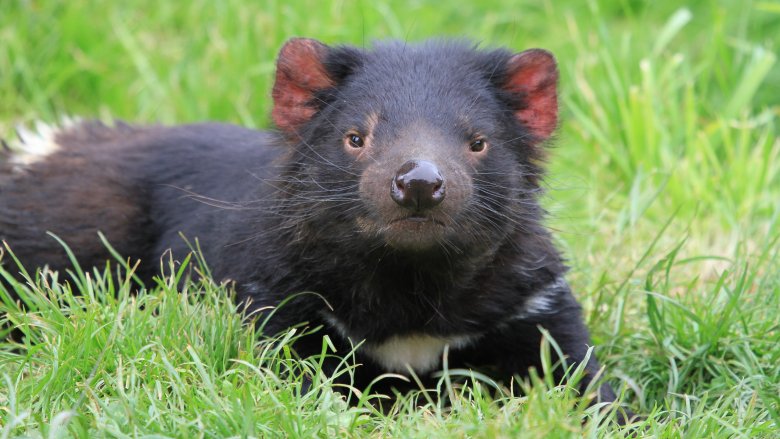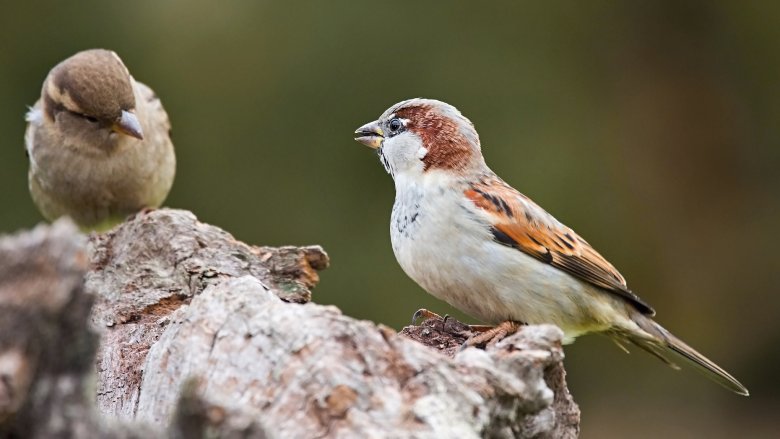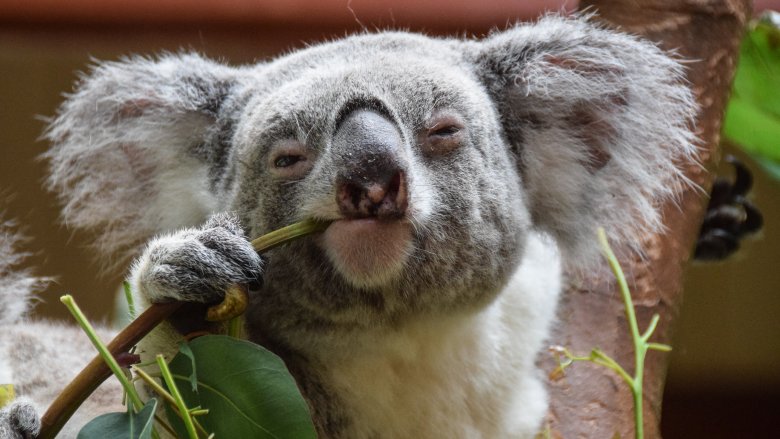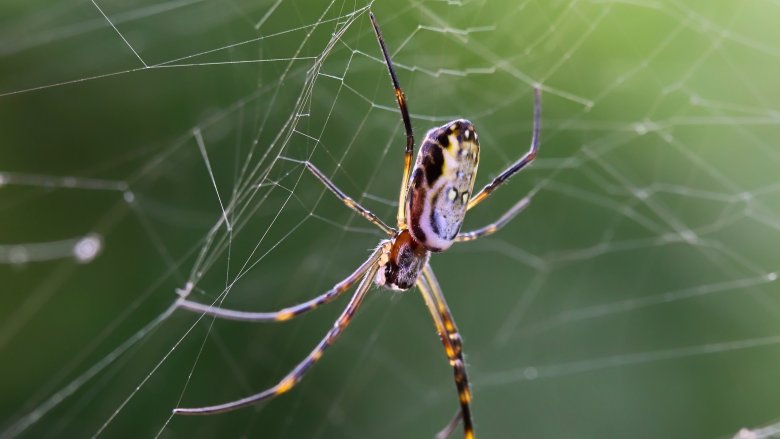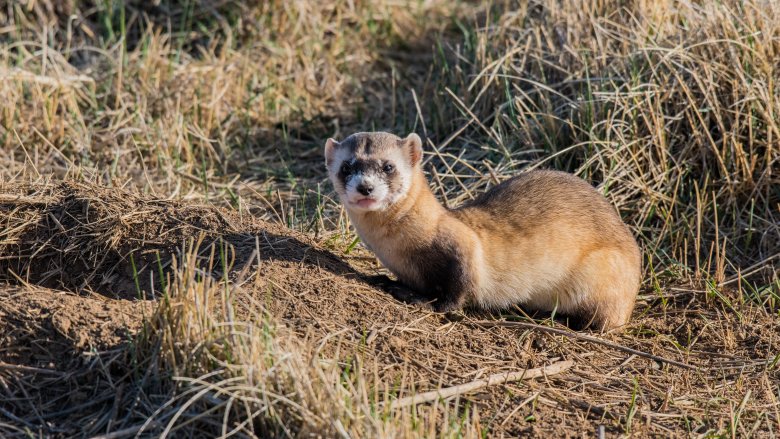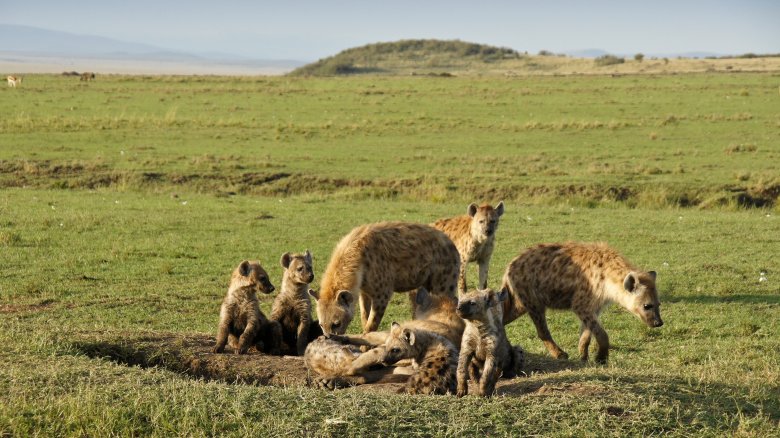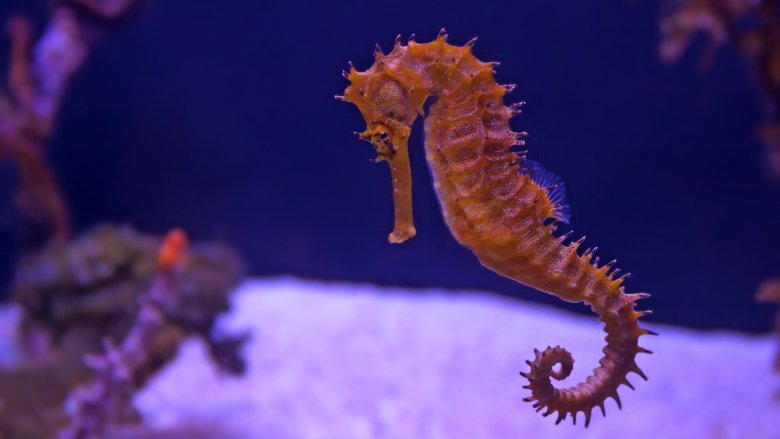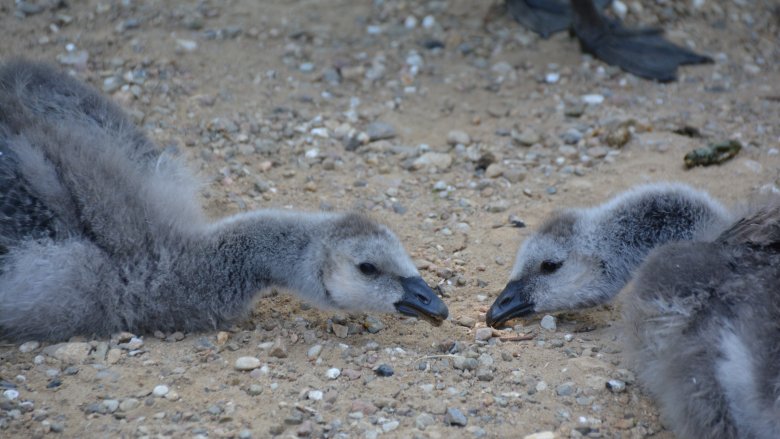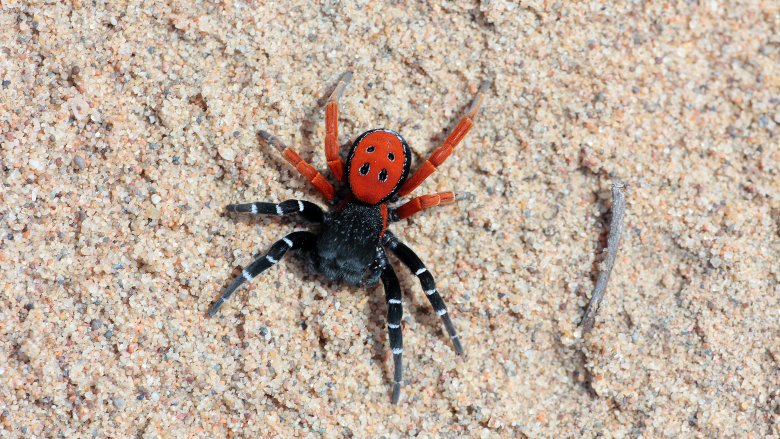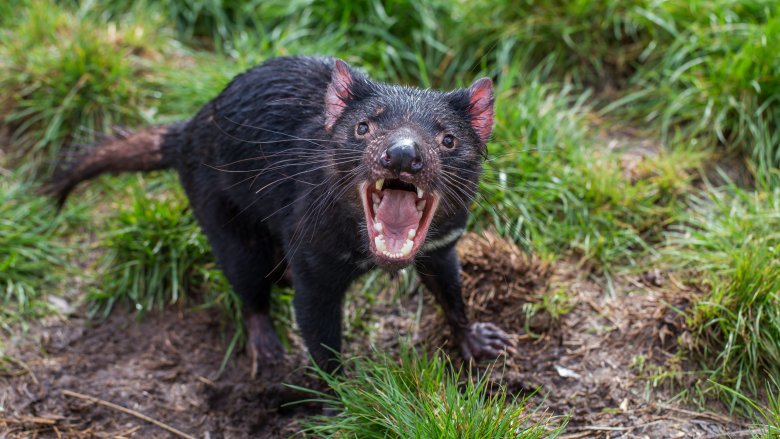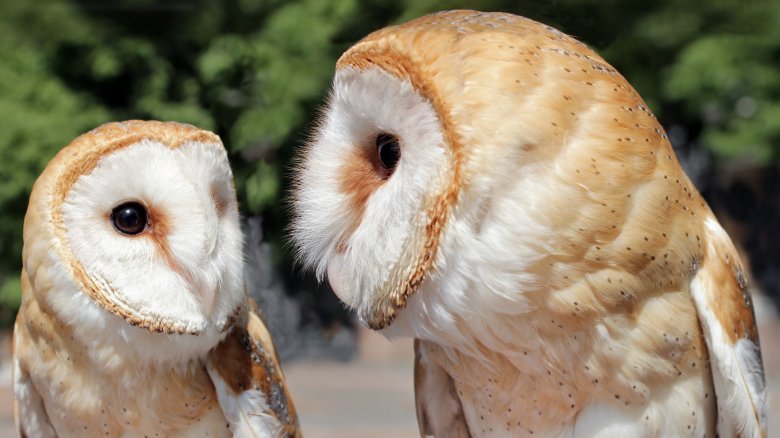Animals That Live Insanely Hard Lives
Humans like to complain a lot, but overall things worked out pretty sweet for us. Evolution gifted mankind with huge brains and opposable thumbs, which we used to make things like wheels and refrigerators and tampons. Meanwhile, lesser creatures are out there just trying to survive while we mock them in our centrally heated houses surrounded by more food than we could ever eat.
But even when it comes to animals, there is a hierarchy of suffering, with some having it much harder than others. In many cases, evolution seemed to pick an animal at random and see how difficult its life could get. Some are involved in death-defying feats shortly after being born. Others have to choose between mating and staying alive. Still others are driven almost mad with love. It's a crazy world out there, and these poor creatures are just trying to make it another day against all the odds.
House sparrows need serious therapy
House sparrows are evil creatures. They have no problem destroying the nests of other birds in the area, breaking the eggs, killing the chicks, and even slaughtering full-grown adults of different species. But they also turn on those they love most.
According to Futurity, house sparrows tend to mate for life. They will move on to another partner if theirs dies, but there are very few sparrow "divorces." However, this does not mean they're monogamous. Both the males and the females cheat, and it drives the sparrow spouses to insanity.
The male house sparrow purposely tries to starve chicks he doesn't think are his. He can't actually tell which ones came from the milkman, but he can make inferences based on how his lady behaved during mating season. If she was away from the nest too much, one 12-year study found he would feed the chicks less, putting in less effort and basically trying to kill them since he had reason to think they weren't his kids.
But Gizmodo reports that the females are even worse. Sure, they might be cheating, but they cannot take it if their man is, too. So they will follow their mate and see how he behaves with other females. Then the jealous sparrow waits. Only once her sparrow husband's mistress has started raising his chicks will she swoop in on the nest (when it is undefended) and kill everything in it. Then she acts like everything is normal because sparrows are psychopaths.
Koalas' only food hates them
Evolution made koalas adorable, but it also did them seriously wrong because the only food they can eat is horrible for them in so many ways. Eucalyptus is poisonous to koalas and gives them very little nutrition. It's basically useless as a meal. But as long as they have plenty of it to munch on slowly all day, koalas can make it work. Except when they don't. In the 1980s, a koala died at a zoo in Japan. It had a full stomach but had died of "wasting disease," in other words, it had sorta starved to death despite being full.
One scientist published a paper about why this happened. Summed up in the book The Inadequate Environment: Nitrogen and the Abundance of Animals, basically, the cuddly things need to have perfect teeth that can crush up the tough eucalyptus leaves enough to get the necessary nutrients out of them. But in young koalas the sharp edges of their teeth might not be developed enough, and the constant chewing over the years wears teeth down too much in older koalas. A University of Melbourne blog points out that some animals have evolved fixes to their teeth issues, but not the koala. If they live long enough their teeth simple grind down too much and they are pretty much guaranteed to starve to death.
But it might never get to that point. Koalas also have a huge chance of dying from chlamydia, which virtually all of them have.
Male orb-weaving spiders lose their virginity and die
Animals are supposed to be driven to mate and continue the species. But it's no surprise that the male orb-weaving spiders try to put off the act as long as possible.
That's because doing it with a lady orb-weaving spider is pretty much guaranteed death. Scientists don't seem to agree on just how bad the odds are, but the best seems to be a 30 percent chance they will live to brag about their conquest. The worst? Zero percent. Yes, according to NPR, some researchers studying orb-weaving spiders found that every single male who successfully mated with a female was eaten by her. The idea is that if she has a snack (the dude) while in the middle of the act, she will stick around longer, and the chances of insemination are higher. So the guy has to sacrifice himself to pass on his genes.
Even if they are part of the very small number that manage to survive getting it on, at best they get one more go, period. Live Science says the male's anatomy means two rounds is the absolute limit.
Knowing how suicidal sex is, it's not surprising that male orb-weaving spiders don't seem to be rushing into anything. Scientists found that unusually, it is the male who chooses the female he wants to mate with. And even when he is surrounded by perfectly acceptable ladies, all ready to blow his mind, he might put it off for days. However, older guys seemed less hesitant.
Involuntary celibacy will kill female ferrets
You might think teenage boys are the creatures most desperate to get laid in the whole world, but that honor actually falls to female ferrets (called jills). Because of how their biology works, they literally have to have sex once they go into heat or they will actually die.
According to the extremely positive-sounding book Find Out about Ferrets: The Complete Guide to Turning Your Ferret Into the Happiest, Best-behaved and Healthiest Pet in the World!, two things go wrong when a lady ferret isn't getting some. Her genitals will swell up and if they stay that way for too long, she can get an infection that can turn deadly. But the bigger problem is a condition called aplastic anemia, which is a "hormonal suppression of bone marrow." This is basically guaranteed to kill the poor, frustrated ferret. But it isn't getting pregnant that fixes her issues, it's just getting some male ferret action. If you own a female ferret, you can put her with a boy ferret who has been neutered and she'll be fine as long as they have relations.
The jill has to worry about getting hers starting as early as 4 months old. And it's such an obvious issue that people were writing about it 150 years ago. In 1865, a book called Notes of an East Siberian Hunter mentioned how female ferrets in Russia were "very lustful" and that hunters knew if they didn't mate they would "become crazy," stop eating and drinking, and die.
Birth is ridiculously dangerous for all the hyenas involved
In many parts of the animal kingdom, the male of the species runs things. But when it comes to hyenas, the alpha female is chock full of testosterone and gets to be in charge. Unfortunately, this makes life for her and all the other ladies extremely difficult.
The extra testosterone means reproducing is a nightmare for female hyenas. Their ovaries are damaged by the hormone, according to Live Science, which makes getting pregnant difficult. And the act of mating isn't a simple process to begin with. That same testosterone gives female hyenas a 7-inch long clitoris or "pseudo-penis." The male hyena has to somehow get his little soldiers to point up and backward and get inside that tube. This takes a lot more practice than is normal for animals. But it's once a lady hyena is knocked up that things get really dangerous. The birthing canal they have to push multiple 2-pound cubs through is only an inch in diameter. This leads to serious tearing during birth, especially in first-time mothers. And those injuries lead to extremely high death rates for the poor mommy hyenas.
But if they got that far in life they were already very lucky because birth is even worse for the cubs involved. Squeezing through that long, skinny tube is so difficult that National Geographic says a truly shocking 60 percent of hyena cubs die during birth. It simply takes too long, and they suffocate before reaching the end.
Seahorses can't catch a break
Seahorses are adorable, but their lives are absolute hell. According to PBS, in a stable population, that is, one where everything is going pretty great for the seahorses, a single pair will produce thousands of young in one go, but only two of the kids will actually make it to adulthood.
ThoughtCo says seahorses need to start eating immediately, and pretty much constantly, forever. This is because they didn't evolve stomachs. Their food passes straight through their digestive system and to get the necessary nutrients they have to binge. Baby seahorses need to eat a staggering 3,000 pieces of food a day. The process is complicated by the fact they swim extremely slowly, so food has to be plentiful where they are at the moment. No wonder so many of them don't make it.
Once they grow up, things don't get any easier. Of course, there are all the normal aquatic predators to contend with (seemingly everything in the ocean likes to eat seahorse), as well as the fact that humans are horrible to them. (On top of destroying their habitats like coral reefs, we kill seahorses by the millions for use in alternative medicine and as decorations.) But the most dangerous thing they have to worry about is something there is no defense against. Your average ocean storm is possibly the biggest killer of seahorses. They get tossed around and can die from exhaustion fighting against the currents or end up stranded on a beach.
Barnacle geese immediately face a suicidal jump
Female barnacle geese probably thought they had it all figured out: to keep their eggs from getting eaten by Arctic foxes, they would nest on rocks hundreds of feet up. The problem is once those eggs hatch, the baby geese can't fly, but they do have to get down. So they jump.
A BBC wildlife show famously filmed this happening and the three "hardened men" behind the cameras found the whole thing "surprisingly sad," which tells you just how well it goes. The goslings are only a few days old when they face either the 400-foot jump ("one of the most extreme survival challenges in the natural world") or starvation on top of the rocks.
According to Stuff, the mom goose flies down and calls to her young. They take some convincing (the babies observed took up to half a day to build up the courage), but eventually they plummet. Hopefully, the wind catches them in the right way and they land softly. But it's just as likely you'll hear the "sickening sound" of "tiny bones breaking." Dr. Michael Gunton described it as "heartbreaking." Even the ones that land safely aren't in the clear: One group of chicks seen getting down successfully was immediately "obliterated" by Arctic foxes before their mother could find them.
Apparently, the geese know some of their goslings will die this way, but it's still a better survival strategy than nesting on the ground. Facing such a tough jump is necessary for the continuation of the species.
Velvet spiders offer random kids their insides as a snack
In the world of velvet spiders, absolutely everything is for the children. According to Gizmodo, unlike most kinds of spiders that live solitary lives, velvet spiders live together in huge nests with hundreds of little friends. They work together more like ants than arachnids, communally catching prey, defending their home, and even sharing parenting responsibilities. The problem is those responsibilities include offering yourself up as a snack.
The velvet spider has a very unexpected caring instinct when it comes to their kids. Mothers will tend to their babies and regurgitate food for them. But since only 40 percent of female velvet spiders will end up mating and they have lots of children, the virgin ladies have to contribute to the care of children that aren't their own. But not only do they not get laid, they also have to eventually give themselves as a sacrifice to feed the babies.
There can be a shortage of food in the arid African places these spiders live, so cannibalism may be necessary for the survival of the species. At some point, usually around the time they are a year old, lady spiders, whether they are the mother or not, will puke up their internal organs and offer them as a feast. The fact that such a simple animal would do this for children that don't share their genetics seems very odd, but they are willing because the group is really one "superorganism" where the survival of the group matters more than the survival of the individual.
Tasmanian devils can't feed most of their kids
A female Tasmanian devil will give birth to about 50 babies (known as imps) in a single liter. But you'll notice that these crazy creatures somehow haven't taken over the world with numbers like that, and that's because nature made it impossible for virtually any of them to live very long.
In an act of survival of the fittest that seems ridiculously unfair, those 50 imps are fighting for life from the second they're born. According to the San Diego Zoo, they have to crawl about 3 inches along their mother's stomach to get to her pouch. There, the 50 brothers and sisters fight over just four teats. There isn't any sharing like in dogs or cats; only four imps are going to get a teat and therefore only four are going to live. Project Noah says the other 46 or so will inevitably die of starvation.
Even for the lucky four that get sustenance, the difficulties don't end. They have to hold on for the next 100 days as their mother carries them around, eventually getting big enough that they drag along the ground.
In the wild the babies that do make it will be lucky to live for five years. And their population is dropping. The biggest threat is devil facial tumor disease, something that only strikes Tasmanian devils and leads, as the name suggests, to a fatal cancer around the mouth and head. They are also hit by cars all the time since they eat roadkill.
Barn owls get way too attached
Usually in the animal kingdom, it's a mating free-for-all. Creatures don't tend to be all that picky about who they're doing it with, switching it up to find the best genetics. But some animals are super loyal, including the barn owl.
According to Wesley The Owl: The Remarkable Love Story Of An Owl And His Girl, barn owls mate for life. Once they find someone to love, that is. They don't live in flocks, so they just spend all their time together. This solitude makes them even more devoted to each other ... too devoted.
It turns out barn owls' love veers hard into codependency. Sometimes when one's mate dies, they will manage to move on and find another partner, but it's extremely unlikely. Instead, the shock of losing their life partner is usually too much for the owl's delicate constitution. They are very sensitive animals that get easily stressed, and losing their soulmate is obviously the most stressful thing that could happen. When it does, it's not unusual for the surviving owl to basically go catatonic. Since they don't have any barn owl friends to cheer them up, they will stop eating and drinking, just turn and face a tree and literally wait to die. It's a bit melodramatic, but maybe there is an owl version of Romeo and Juliet they all aspire to or something. Whatever the reason, losing their mate often leads to a "deep depression" that they don't survive.
